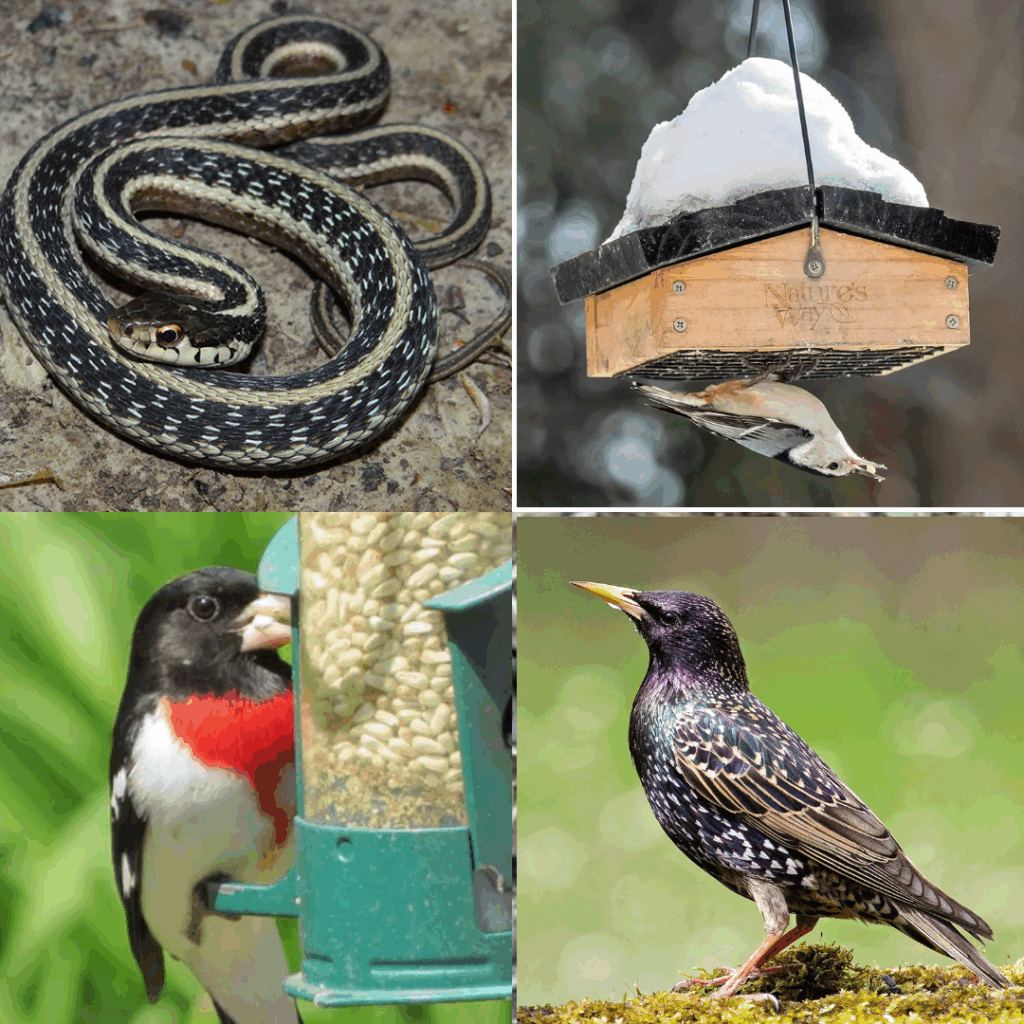There is no ‘invitation only’ to your backyard

Spring has sort of sprung … well, actually middle summer sprang, then October chill, but regardless.
Wildlife has woken up, from bee to butterflies, and oriole to starling, they are all back. But I get several questions every year on how to attract just the specific wildlife they want, and not others. It isn’t realistic. There is no “by invitation only” to your backyard.
First, you need to know why they are there in the first place. And in some cases, how your behavior can modify who is visiting.
Let’s start with the least appreciated of all, the common garter snake. And, yes, that is garter (as in lady’s lingerie accessory from days of yore, and still worn at weddings today).
So many people call the gardener snakes. And maybe that’s what this gardener’s helper should have been called, because if you see a garter snake on your property, it is a VERY GOOD THING.
Garter snakes eat lots of pests, they are non-venomous, and just want to do their job and stay out of the way. I tire of posts on social media when people post wildlife they want identified and often controlled and the uneducated attitude responds with the only good snake/bee/animal is a dead one.
Nature was fine without us. There are all sorts of checks and balances, until we get involved.
This theme runs true with other species as well. You may, or may not, be surprised that I get several calls each year from homeowners who want plants that attract butterflies, but not bees; birdfeeders that attract cardinals but not starlings. Now on the former, the butterflies vs bees call. This is just not possible.
Except for a few spore producers, like ferns, every plant, from oak tree to a zinnia, sprout flowers. And the whole evolution of pollen and seed production co-evolved for bees (except for the wind pollinated plants like corn).
Even wasps and hornets are “good guys” to some degree. They are pollinators, and they also prey on grasshoppers, flies, caterpillars, and other pest insects. But there are strategies to decrease the likelihood of getting stung.
I had a neighbor who told me the yellowjacket/bee/hornet trap they bought wasn’t working “right.” When I looked over the fence, I noticed they hung the trap, over their picnic table during a party.
In addition, several people had floral Hawaiian shirts on, and I could smell the fragrance from perfume and whatever they call after shave all the way in my yard. Is it the insect that is the problem here? No. It was as if they set up the party to invite the stinging pests instead of people.
When it comes to backyard bird feeding, similar things happen. People are surprised when they call to complain about raccoons, opossums, skunks, and other wildlife coming to their backyard and I ask if they feed birds. Then, when the answer is yes, I tell them to take down their feeders.
In reality, we are setting up feeding stations for any wildlife, not just the birds. But people don’t want to hear “no.” Again, strategy!
When it comes to wanting certain birds but not others, look to modifying your behavior and what you are feeding. Several people have found success by taking feeders in at night and sweeping up spent/fallen seed.
For example, I had a call about starlings and their new babies raiding suet feeders. Yep. Their babies are hungry, too. But did you know that if you use an inverted suet feeder where access to the suet is only on the bottom of the feeder, the only birds that have prop tails that can support feeding upside down, are the woodpeckers and wrens. Their stiff tailfeathers can act like a third leg to give them the leverage to eat upside down. Starlings don’t have this feature.
Also, using specific seeds to decrease the interest of some species works to modify those feathered visitors. Take oil sunflower seed vs safflower seed. Sunflower seed is the McDonald’s French fry of the bird world. Every bird loves this fat, rich seed. Safflower seed, not so much. Safflower is attractive to our songbirds that have strong seed-cracking beaks like cardinals, finches, titmice and grossbeaks. And an additional benefit, squirrels don’t care for safflower at all.
For squirrels, you can also follow the modified adage, if you can’t beat them, join them. I live in an old neighborhood with lots of mature trees; of course I have squirrels. So, my strategy is to feed them. And ear of dent corn on a spike, chain or one of those cute woodwork squirrel picnic tables does the trick. As long as they have that, they keep away from my birdfeeders.
And sometimes, we do things that we don’t realize are harmful to those we want to attract the most. It was just this week that I learned that the grape jelly so many of us put out for the fruit-eating birds like orioles and grey catbirds, can actually be fatal to hummingbirds.
If the jelly gets on their wings, they can stick together, and the hummingbirds can’t fly. Some animal rescues are reporting finding hummingbirds with wings and beaks stuck closed. No more jelly for birds at my house. We learn as we go. And we each have to make our own decisions.
What is best for your yard? As I always say, it is your personal Eden. You get to decide. But I approach it as variety is the spice of life!
Having many plants that offer not only food and beauty to me, are also the same for the nature around me. And I embrace it!